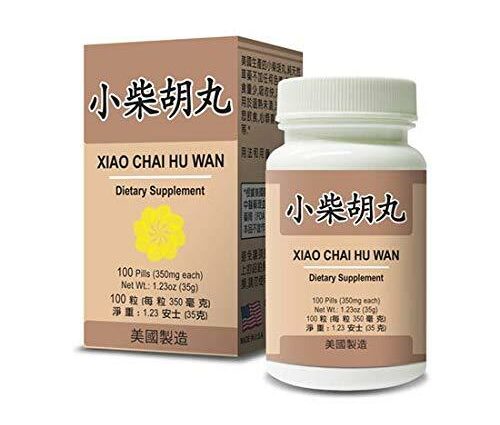Contents
Xiao Chai Hu Wan
Traditional therapeutic uses
Main indications: infectious disease that lingers, that the body cannot fight, influenza, bronchitis, pneumonia, malaria, hepatitis, mumps.
In Chinese energy, this preparation is used when the infection is lodged in the energy layer Shao Yang. Microbes try to grow, but fail to do so, while the body’s energy tries to drive them out, without having the strength.
Associated symptoms : alternating fever and chills, dry throat, bitter taste in the mouth, dizziness, irritability, chest tightness, nausea, vomiting, loss of appetite, white coating on the tongue.
Dosage
As this formula comes in different forms and strengths, it is important to follow the manufacturer’s recommendations. This product should be taken over a short period of time: one month for example. It is often used in combination with other drugs or herbal remedies.
Comments
The preparation is very effective in the fight against respiratory infections that are slow to heal. Normally, taking this product is sufficient to restore health. Otherwise, consult a traditional Chinese medicine therapist and doctor. All infections must be fought quickly.
History
This formula is cited about thirty times in the Shan Han Lun, written at the time of Hans (206 BC to 220 AD) by the famous physician Zhang Zhong Jing. This old work deals with the treatment of infectious diseases caused by cold.
Research
Japanese researchers were very interested in this formula of traditional Chinese medicine which bears the name of Shosaiko-to in Japan. They focused their studies on studying the mechanisms by which the preparation was able to significantly stimulate the immune system.
We sought to understand the pharmacodynamics of Shosaiko-to in studies on animals infected with various infectious agents, including Pseudomonas aeruginosa1 et Listeria monocytogenes.2 Researchers even put forward the idea that the preparation could be useful for patients with the chronic hepatitis virus.3
The results of all these studies clearly show that Shosaiko-to causes the accumulation of leukocytes in the body and stimulates phagocytic activity in treated animals. It has also been shown that the preparation can induce the production of immunoglobin IgA in the mucous membranes of treated animals.4 Further studies showed that animals treated with the preparation exhibited blood serum with an increased content of interferons and other antiviral and antitumor factors.5,6
Cons-indications
- This formula is contraindicated in cases of excess Yang upwards, Liver Fire which manifests as bleeding gums, headaches, hypertension, vomiting blood and dizziness.
Composition
Nom en pin yin | Pharmaceutical name | Therapeutic actions |
Chai Hu | Radix bupleuri (buplévre root) | Harmonize it Shao Yang, refreshes the heat |
Huang Qin | Scutellaria root (racine de scutellaire) | Drains Heat and Moisture |
Ban Xia | Rhizome pinelliae ternattae (rhizome de pinellia) | Dissolves phlegm, drains moisture |
Sheng Jiang | Rhizoma zingiberis officinalis (rhizome of ginger Harmonizes the average home Stops nausea and vomiting) | Harmonizes the average hearth, stops nausea and vomiting |
Ren Shen | Radix ginseng (Asian ginseng root) | Tones the immune system, tones Energy |
Zhi Gan Cao | Radix glycyrrhizae uralensis (licorice root roasted in honey) | Tones the middle hearth, tones the Lungs |
Da Zao | Fruit batryticatus (jujube fruit) | Regulates the digestive system and the immune system |
On the shelves
The products of the following companies meet the good manufacturing practices ofAustralian Therapeutic Goods Administration, which are considered, at present, to be the highest standards in the world for the evaluation of manufacturing processes of Chinese Pharmacopoeia products.
|
|
|
|
|
|
Available in Chinese herbalists, many natural health product stores, as well as distributors of acupuncture and traditional Chinese medicine equipment.










